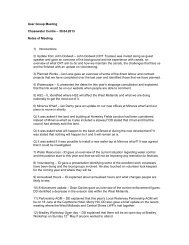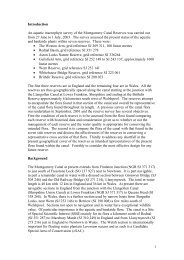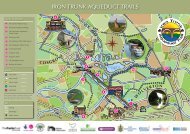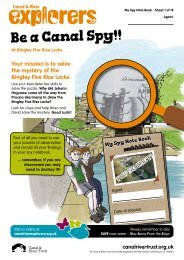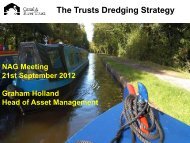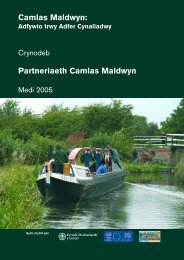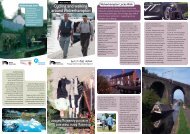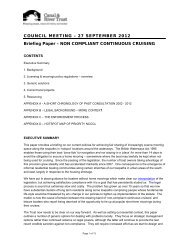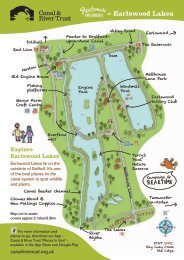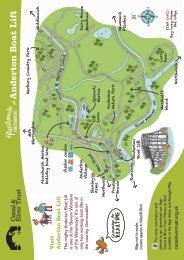Towpath Design Guide - Canal & River Trust
Towpath Design Guide - Canal & River Trust
Towpath Design Guide - Canal & River Trust
Create successful ePaper yourself
Turn your PDF publications into a flip-book with our unique Google optimized e-Paper software.
case study<br />
4.1 Theoretical Case Study<br />
Disclaimer: Although illustrated on a map base this<br />
case study is purely theoretical and the features<br />
shown on this plan are not real life situations. They<br />
have been shown to raise and explore as many of<br />
the issues discussed in this guidance document as<br />
possible.<br />
The case study is an illustrative example of how a<br />
mutliple, but co-ordinated design aproach may be<br />
appropriate, for example the palette of materials<br />
may be cohesive and consistent in terms of<br />
appearance but the path width or surfacing material<br />
may vary depending on site specific location and<br />
usage issues.<br />
To set the scene the case study is centred on a<br />
canal town with a train station that provides good<br />
linkages to neighbouring towns. The canal connects<br />
the town with neighbouring villages as well as local<br />
visitor attractions. It is used as a commuter route for<br />
people that live in nearby villages and work in the<br />
town as well as people that use the towpath as a<br />
route to the train station to commute to other places<br />
of work. The canal also forms sections of a circular<br />
pedestrian route within the town centre as well<br />
as being part of a longer distance trail. There are<br />
several listed bridges and locks along this section of<br />
canal.<br />
35<br />
BW <strong>Towpath</strong> <strong>Design</strong> <strong>Guide</strong>lines<br />
Version 1 - January 2012



